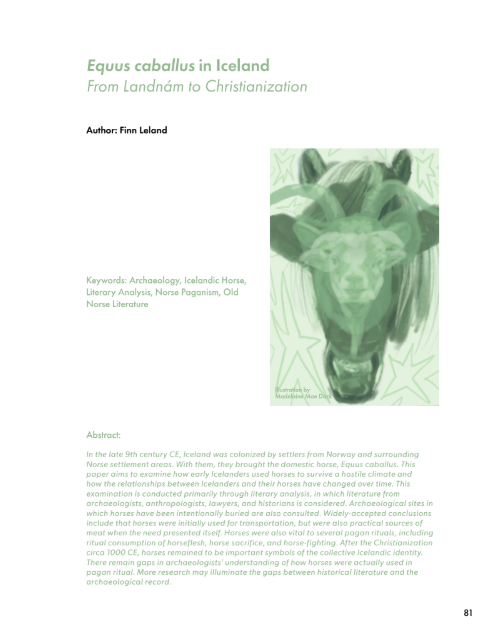Equus caballus in Iceland
From Landnám to Christianization
DOI:
https://doi.org/10.29173/crossings323Keywords:
horses, Iceland, paganism, ChristianityAbstract
In the late 9th century CE, Iceland was colonized by settlers from Norway and surrounding Norse settlement areas. With them, they brought the domestic horse, Equus caballus. This paper aims to examine how early Icelanders used horses to survive a hostile climate and how the relationships between Icelanders and their horses have changed over time. This examination is conducted primarily through literary analysis, in which literature from archaeologists, anthropologists, lawyers, and historians is considered. Archaeological sites in which horses have been intentionally buried are also consulted. Widely accepted conclusions include that horses were initially used for transportation, but were also practical sources of meat when the need presented itself. Horses were also vital to several pagan rituals, including ritual consumption of horseflesh, horse sacrifice, and horse-fighting. After the Christianization circa 1000 CE, horses remained important symbols of the collective Icelandic identity. There remain gaps in archaeologists’ understanding of how horses were actually used in pagan ritual. More research may illuminate the gaps between historical literature and the archaeological record.

Downloads
Published
Issue
Section
License
Copyright (c) 2025 Finn Leland

This work is licensed under a Creative Commons Attribution 4.0 International License.

